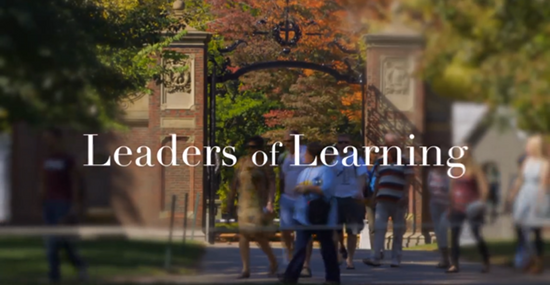You have /5 articles left.
Sign up for a free account or log in.
After working for twelve years as an elementary school teacher, an instructor in higher education, and a facilitator for professional development workshops, I felt comfortable with instructional design — until I started working on a massive open online course (MOOC) for HarvardX.
As part of the team that created the course Leaders of Learning with Harvard Graduate School of Education (HGSE) professor Richard Elmore, I found my ideas about how to engage learners were challenged by the simple fact that I could not watch their reactions or gauge their responses in real time.
Eventually, I did see how some of the design parameters we use with our in-person classes do hold true in an online environment.

A video capture from Leaders of Learning, a 6-week HarvardX course on edX beginning on July 8.
Richard Elmore taught a Leaders of Learning course for several years in a traditional classroom setting, and as a “teaching fellow” I helped to select readings, plan in-class activities and provide feedback on students’ work.
This course was based on two central premises: that learning environments will look vastly different in the future than they do today, and that in order to lead successfully in these environments, leaders must have their own theory of learning.
A good leader should be able to complete the sentence “people learn best when...” and build a learning environment that supports this.
In making this digital course, we focused principles from our theory of learning, including the three key ideas below:
People learn best when … they are able to apply knowledge about themselves.
We ask students to reflect upon their assumptions and their perspectives about how people learn and what environments best support learning. This is accomplished through a self-assessment that learners take early in the HarvardX course. The Modes of Learning Assessment places a learner’s responses within a framework that outlines different purposes of and settings for learning. Then we deliberately provide content that matches as well as content that diverges from their perspectives.
People learn best when … they can create clarity out of confusion.
In Leaders of Learning, we juxtapose content that represents vastly different perspectives on learning. For example, some believe that all young people should attend higher education, but others think that real learning comes from out-of-school experience. As students progress through the course, they are synthesizing these ideas as well as sharpening and complicating what they believe.
People learn best when … they can develop and test new designs.
I’m a big fan of design thinking and design-based research. Design thinking starts with ideation—or coming up with potential ways to represent the product or process, given the needs of the audience. In Leaders of Learning, students will be asked to consider how their theories of learning have real organizational and structural consequences, and how they would translate from abstract theory to concrete implications. They’ll be challenged to design and describe their ideal learning environment and share their results with their fellow learners.
In many ways, we have taken a design-based approach to creating the Leaders of Learning experience for HarvardX: design thinking begins with the premise that you can create a product or an experience for an audience, but you gain the most valuable information once the audience interacts with the design and provides feedback.
As we get ready to launch Leaders of Learning, I am looking forward to seeing how our course holds up when experienced by learners from around the world.
Candice Bocala completed her Ed.D. in 2014 from the Harvard Graduate School of Education, where she assisted with and taught courses on school improvement, urban education, data-based inquiry, and program evaluation.



